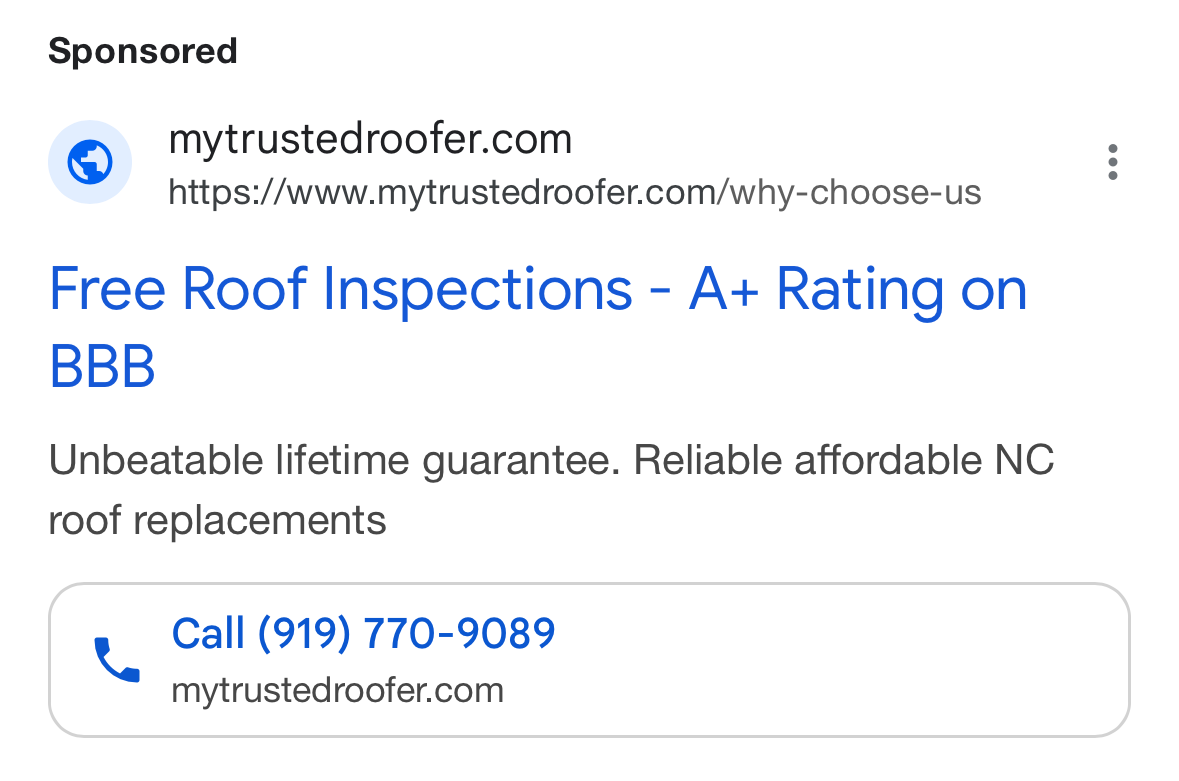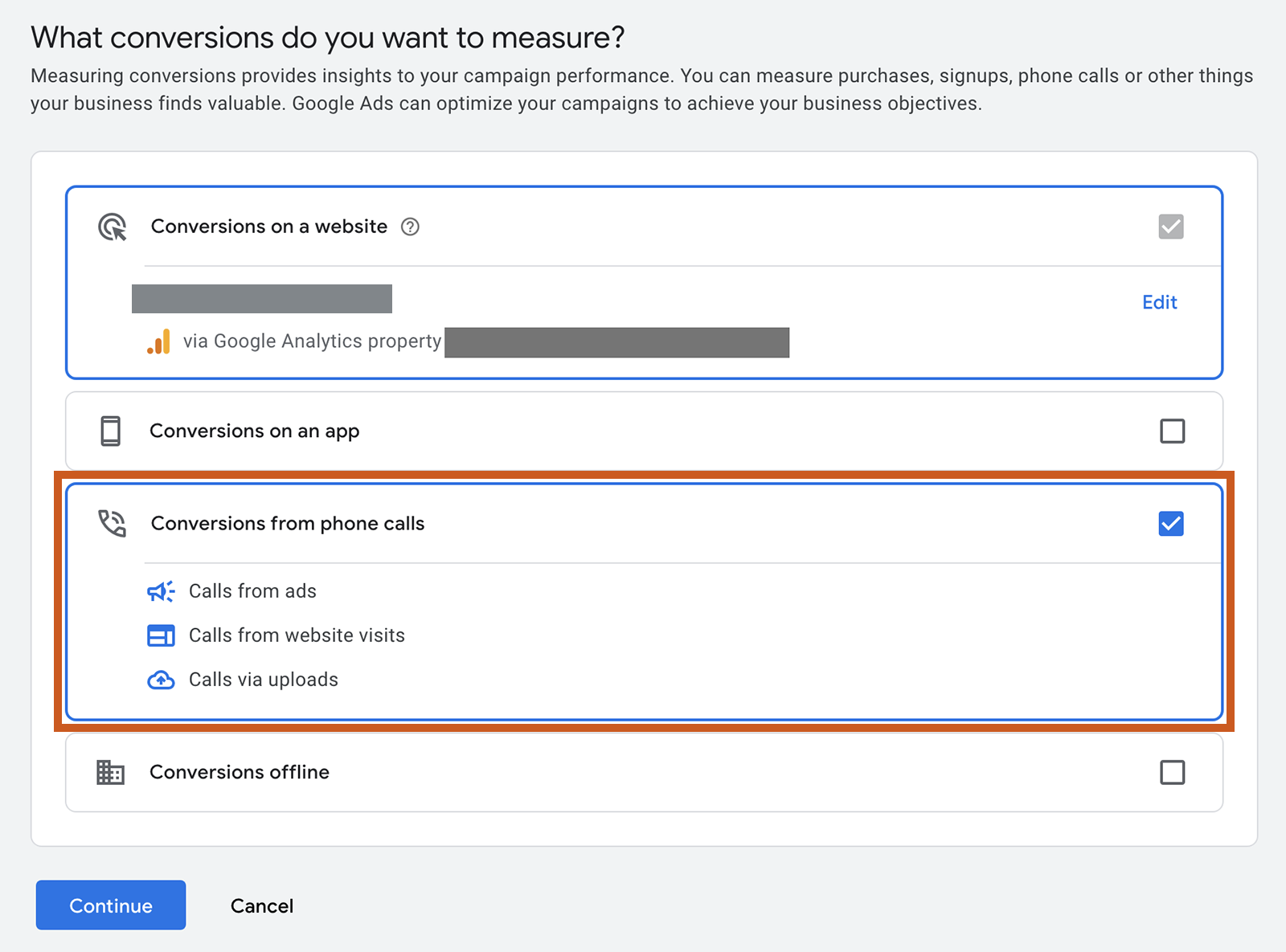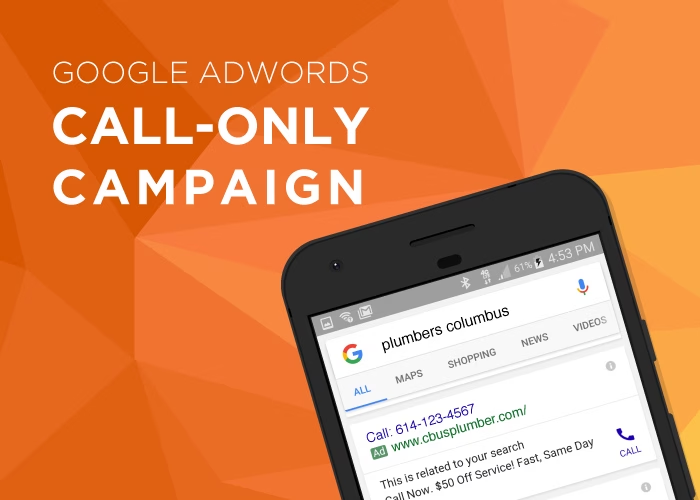Google Advertisements offers numerous helpful tools to target phone calls.
But if your approach centers on call–only advertisements, you need to modernize your strategy now — or risk losing out on transformations.
I collected everything you need to know about how call–only advertisements are changing and how to optimize hunt advertisements for phone calls.
Key Takeaways
- Google Ads is automatically migrating eligible call-only ads to responsive search ads (RSAs).
- Advertisers will no longer be able to create new call ads.
- Call assets are now crucial for phone call conversions.
What Are Call-Only Ads?
Call-only advertisements are a type of Google hunt announcement that prompts potential guests to call the advertiser rather than visit their website.
Also known as call advertisements, they display an interactive call button with the advertiser’s phone number. Like this:

They appear on Google search engine results pages (SERPs) when relevant keywords trigger them. That means interested guests can telephone advertisers directly from hunt results.
Since these Google advertisements are designed to encourage people to call your business, they only appear on bias that make phone calls( e.g., mobile bias like smartphones).
They don’t work for every advertiser.
But they can be a good fit for high-ticket offers that require a pre-purchase phone call.
They can also work for original businesses and lead generation companies that bespeak movables over the phone.
But I don’t recommend going all-in on call-only ad campaigns. This ad type is slated for some significant changes in the near future.
How Call-Only Ads Are Changing
In late 2024, Google Ads quietly announced that the platform intends to sunset call-only ads in 2025.
For most advertisers, this isn’t necessarily bad news.
Call ads may have delivered decent results in the past. But in recent years, many advertisers have reported issues with getting call campaigns to spend budgets and generate clicks consistently.
Fortunately, there’s a good alternative.
If you use Google call ads or if you want to get more leads on the phone, here’s what you need to know:
1. Responsive Search Ads Will Replace Call Ads
Once the sunset begins, Google Ads will automatically migrate eligible call ads to RSAs.
Your call-only ads qualify for this automatic upgrade if they include:
- Your business name at the crusade or account position
- A landing page URL that leads can click to visit directly from the ad
Still, you can manually add them if you have been calling advertisements that do not include these rudiments.
Historically, the platform has recommended adding a final URL to this announcement type. But this element has always been voluntary.
Soon, Google Advertisements will require advertisers to include a wharf runner URL when creating new call advertisements.
Adding a final URL will allow your advertisements to upgrade to RSAs automatically.
2. Google Ads Will No Longer Support New Call Ads
Eventually, Google Ads won’t allow advertisers to create new call-only ads.
The platform hasn’t blazoned a timeline for this stage of the process.
But do not worry. As an advertiser, you have other options to get calls to your business.
3. Advertisers Can Use Call Assets Instead of Call Ads
Rather than running call advertisements, transition to including call means in your hunt advertisements.
When you add a call to RSAs, your business phone number can appear as a clickable element. Like this:

But there are a couple of effects to note
Your phone number will not always appear in an RSA. Google Advertisements automatically displays the means most likely to drive results.
And when your number does appear in a hunt announcement, it’s far from the only element that leads can click.
They’ve the option to click your caption, which links to your final URL. Or your sitelink means, which all lead to unique URLs on your website.
Below, we’ll walk you through tips on using call assets and optimizing Google Ads for phone calls to your business.
How to Update Existing Call Ads
If you want your existing call ads to upgrade automatically, make a straightforward update:
Open the ad and add a landing page link in the “Final URL” box.

Optionally, add a verification URL.
This link won’t display in your ads. Instead, it tells Google Ads to confirm that the phone number in the ad matches the one associated with your business.
You can also input a display path. This URL will display in your ads.
It gives potential customers a better idea of what they can expect to find on your landing page.
For example, your final URL might be: https://website.com/chicago-hvac-repair
And your display path might look like: https://website.com/chicago-hvac/spring-special
11 Ways to Optimize Google Advertisements for Phone Calls
As the platform phases out call-only ads, you need a new Google Ads strategy to get leads on the phone.
Use my recommendations to get further phone calls from your RSAs and Performance Max( PMax) juggernauts.
1. Set Up Conversion Tracking
First, set up call shadowing for your Google Advertisements.
This way, you can cover phone call transformations and optimize juggernauts for calls.
Open your account‘s conversion summary and produce a new conversion action. Check the box for “Conversions from phone calls.”

On the next screen, select “Phone call lead.” Then, click to set up “Calls from ads.”
Note that this conversion action tracks clicks on your call means only.
Repeat the process to set up tracking for” Calls from website visits.” This lets you collect conversion data when an implicit client clicks your announcement, visits your website, and calls your business from your website.
Ensure that you elect the new conversion thing( s) when creating an announcement crusade. And conclude to reach your crusade pretensions using phone calls.
2. Enable Call Reporting
Next, switch on Google Ads’ call reporting feature.
When you enable this feature, calls get routed to your business via a Google forwarding number.
To customers, it looks like they’re calling your business directly. However, with this number in place, Google Ads can track data such as the caller’s phone number and call duration.
Below, we’ll cover what to do with the data.
But first, set up call reporting by opening your account settings and switching the call reporting setting to “On.”
Note that you can opt to save call recordings for further analysis. And you also have the option to sync call data with a third-party analytics app of your choice for deeper insights.
3. Create Call Assets
Once you set up call means for your account, you can start adding them to search and PMax juggernauts.
Go to your account‘s means and click to produce a new call asset.
Input your phone number and link the phone call conversion action you just set up.
By dereliction, Google Advertisements adds a call to action at the account position. But you have the option to add them to a specific crusade or announcement group rather.
This means that you will regularly use across juggernauts, and conclude to add them to the account. For means with unique phone figures or schedules( see below), conclude to add them to a specific crusade or announcement group.
Also, add your call means to hunt or PMax juggernauts.
4. Schedule Call Assets During Business Hours
When you optimize advertisements for calls, ensure the phone rings when your team is available to answer.
Otherwise, you will end up wasting announcement spend on clicks and potentially lose out on warm leads.
You could acclimate your announcement schedule so advertisements only run during business hours.
But there is a better way.
Open your call asset and click to view” Advanced options.” Also, input the days and times when you want the asset to appear in advertisements.
Your advertisements will still run on the crusade schedule you set. But when call means are not eligible to appear, advertisements will direct leads to your website instead.
5. Increase Your Call Bid Adjustment
Still, change how you bid on these relations if you want further phone calls than website clicks from your hunt advertisements.
With call shot adaptations, you conclude to bid more on phone call relations. This makes it more likely your call means will display in advertisements on mobile bias.
Open your account‘s advanced shot adaptations. Also, find the crusade you want to modernize and look for the” calls” commerce type.
Input your shot adaptation and review the calculation before saving. As an illustration, if you increase a $1 bid by 50%, the shot will acclimate to$ 1.50.
6. Fine-Tune Your Location Targeting
When you want to attract nearby customers to your local business, you need to be specific about the location.
To get location targeting right, define your service area.
That might be an entire megacity, metro region, or state. Or it might be many specific postal canons.
The further you optimize your position targeting, the more you can optimize your ad spend. Plus, you can collect grainy data and zero in on the areas where your advertisements perform well.
7. Focus on High-Intent Keywords
Call transformations are not a good match for every hunt crusade.
For illustration, top-of-channel advertisements that target people in the morning of their client trip presumably will not lead to numerous calls.
Still, advertisements that target people looking to solve a problem or make a purchase are much more likely to get calls.
To optimize for phone calls, produce announcement groups with high–intent keywords.
You can find applicable high–intent keywords by booby-trapping your Google Advertisements data. Check the keyword report to identify keywords that induce the most phone calls and other high-value transformations.
8. Identify Calls That Convert
Utilize your call tracking data to identify which calls result in valuable conversions.
Check your call details report and look for calls that led to sales or in-depth conversations with your sales team.
You can match the phone number from the report with your customer relationship management (CRM) data. You can also sort the report data by call duration.
Then, look for similarities between these calls and take appropriate action. For example:
- Did your best calls come from the same area code? Adjust your location targeting accordingly.
- Did your longest calls come during a specific time of day? Ensure you have sufficient sales or customer support representatives available to take calls during those times.
- Are you missing a lot of calls during a specific time frame? Adjust your call asset schedule to avoid getting calls outside of business hours.
9. Use Assets That Make Ads Stand Out
Call means are just one of the numerous asset types you can add to RSAs and PMax juggernauts.
Some are needed( e.g., final URL, caption, and description). But numerous announcement extensions are voluntary.
Trial with different asset types to make your advertisements stand out in the hunt — and get further calls.
Use callouts to punctuate when your business is open(” 24 hours”).
Add sitelinks to clarify the services your business offers and give leads further opportunities to click(” HVAC form” and” Domestic Services“).
Include elevations to incentivize interested guests to act right down(“$ 30 off original clean“).
10. Build Remarketing Lists
Because call means are ideal for high–intent quests, they are frequently a good fit for remarketing to people who have formerly shown interest in your business.
To reach these prospects, produce a new member using Google Analytics 4( GA4) data.
Use one of the premade segments to reach relevant audiences quickly. Like recently active users or non-purchasers.
Alternatively, you can create a custom audience using a GA4 template or predictive data.
11. Add a Phone Number to Your Landing Page
Getting calls directly from your search ads is just one way to target phone call conversions.
Once you set up call tracking, Google Ads can also report on conversions that happen when a customer clicks your ad and initiates a call from your landing page.
To capture these additional opportunities:
- Use mobile-friendly landing pages for your final URL and sitelinks
- Add a phone number and a phone call-to-action to your landing pages
- Confirm that you’ve set up conversion tracking for calls from website visits


